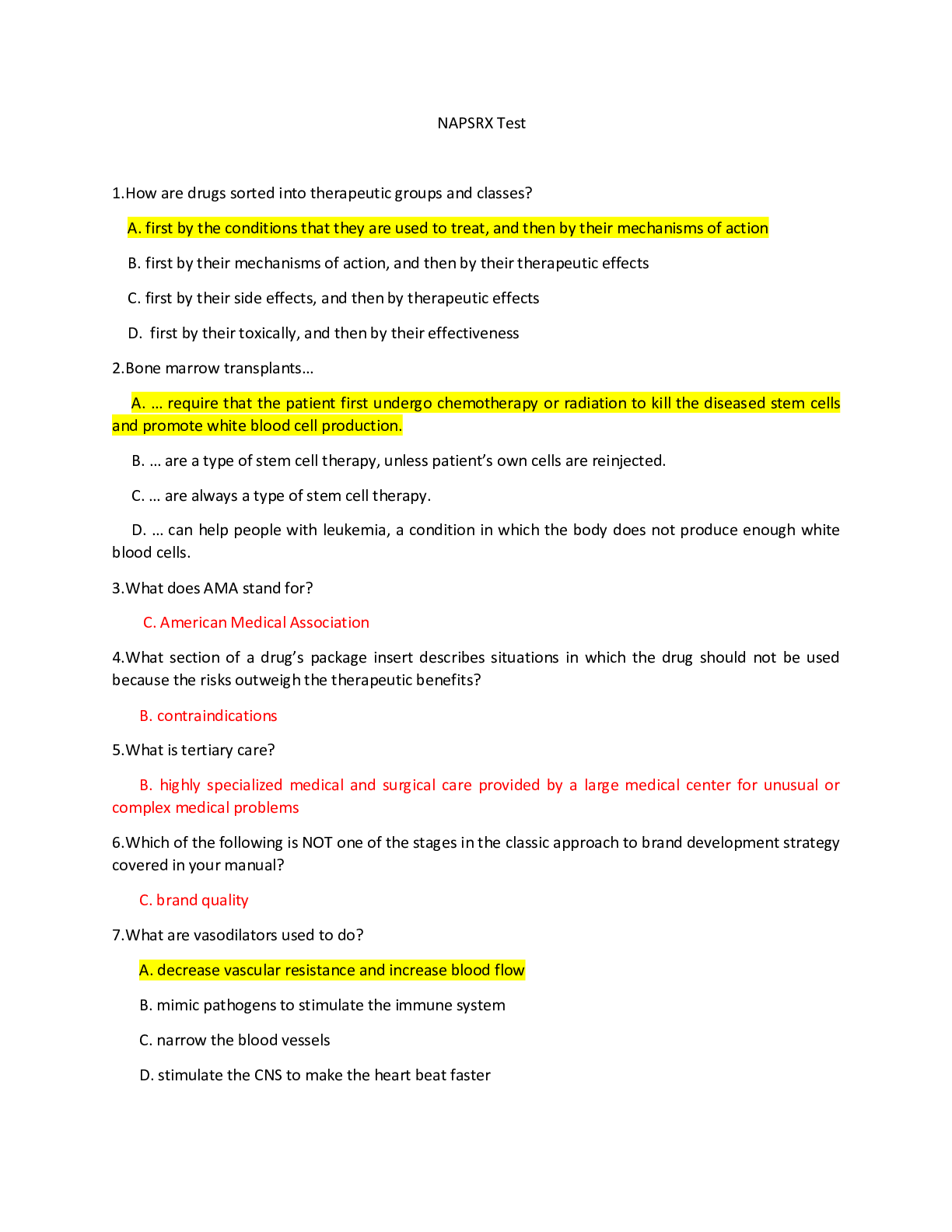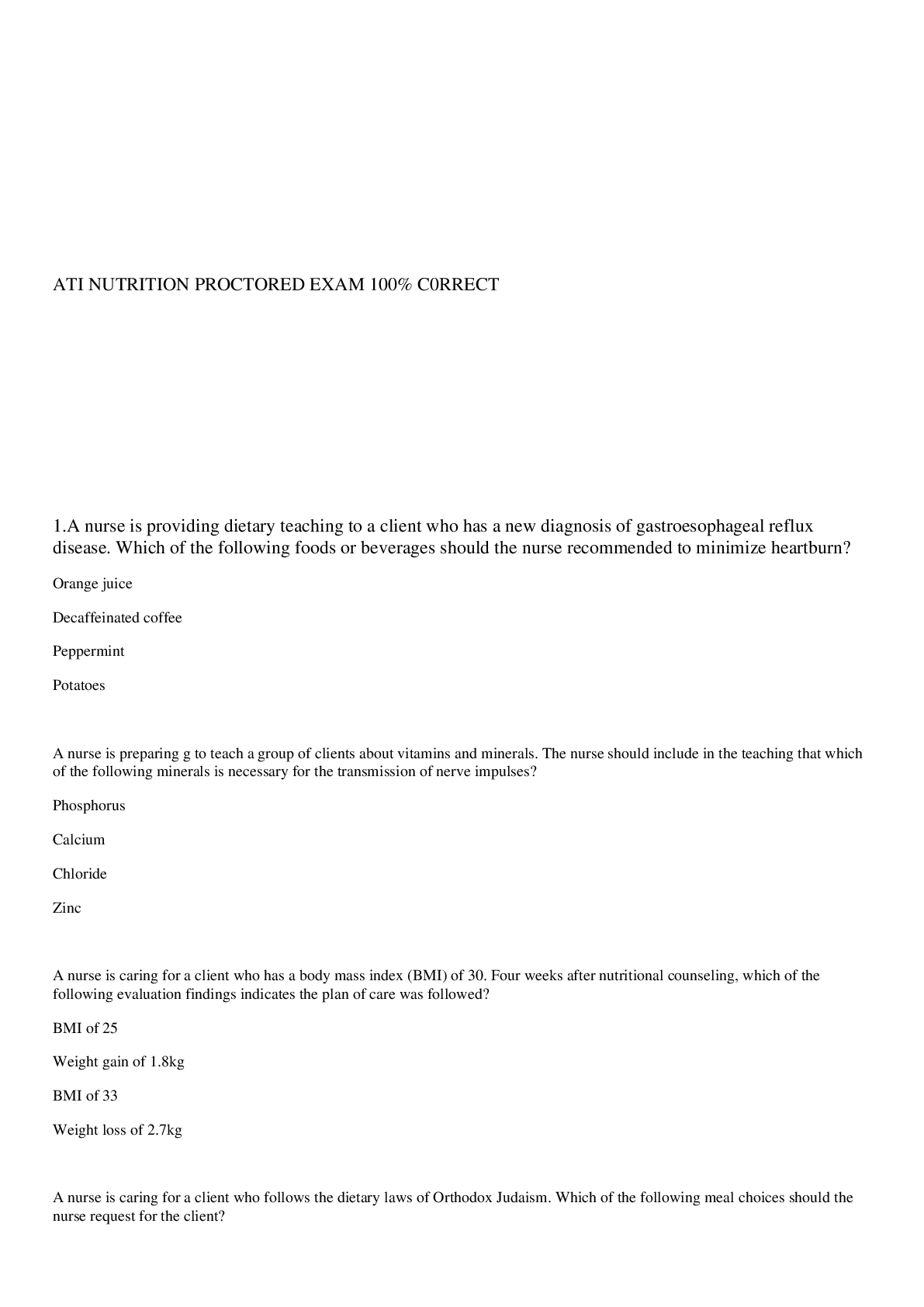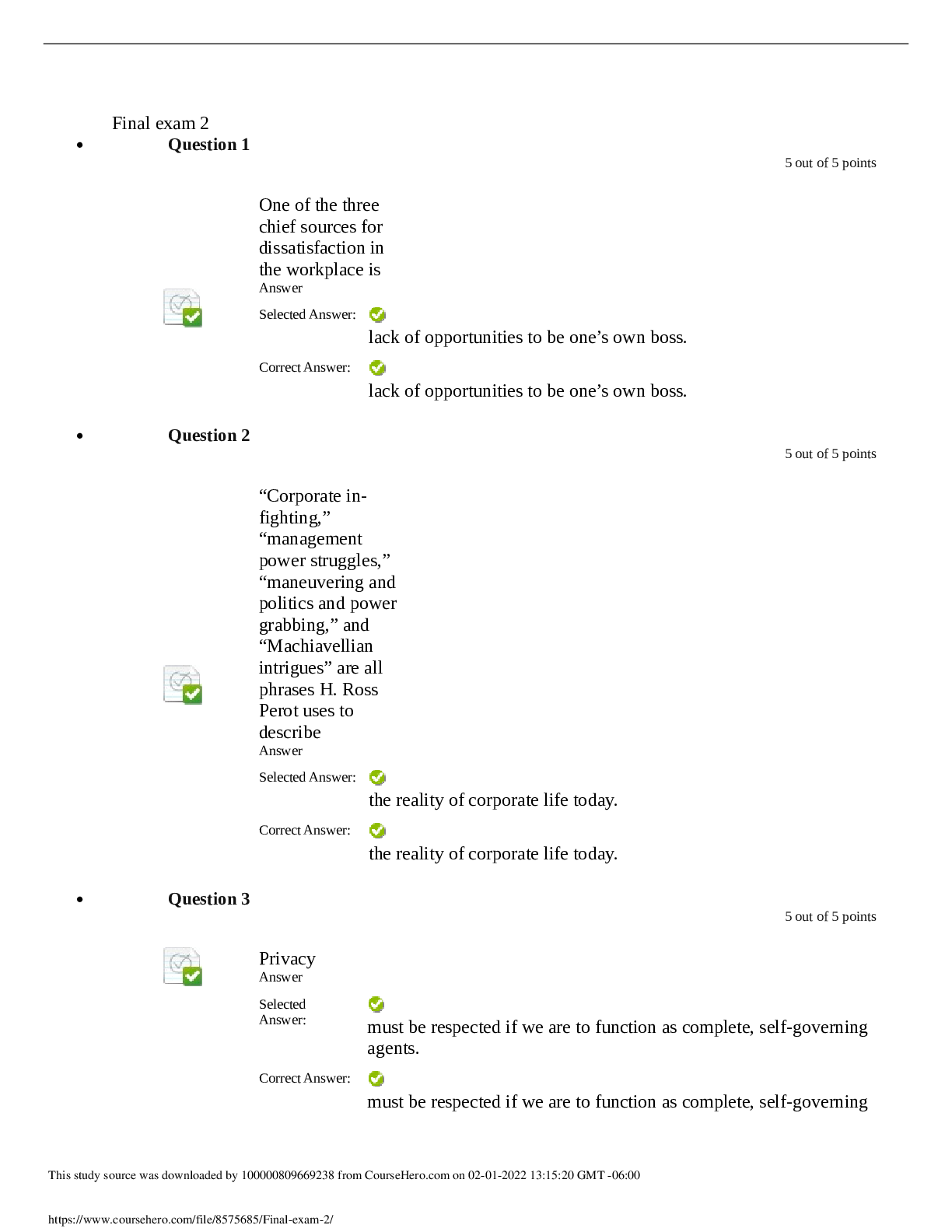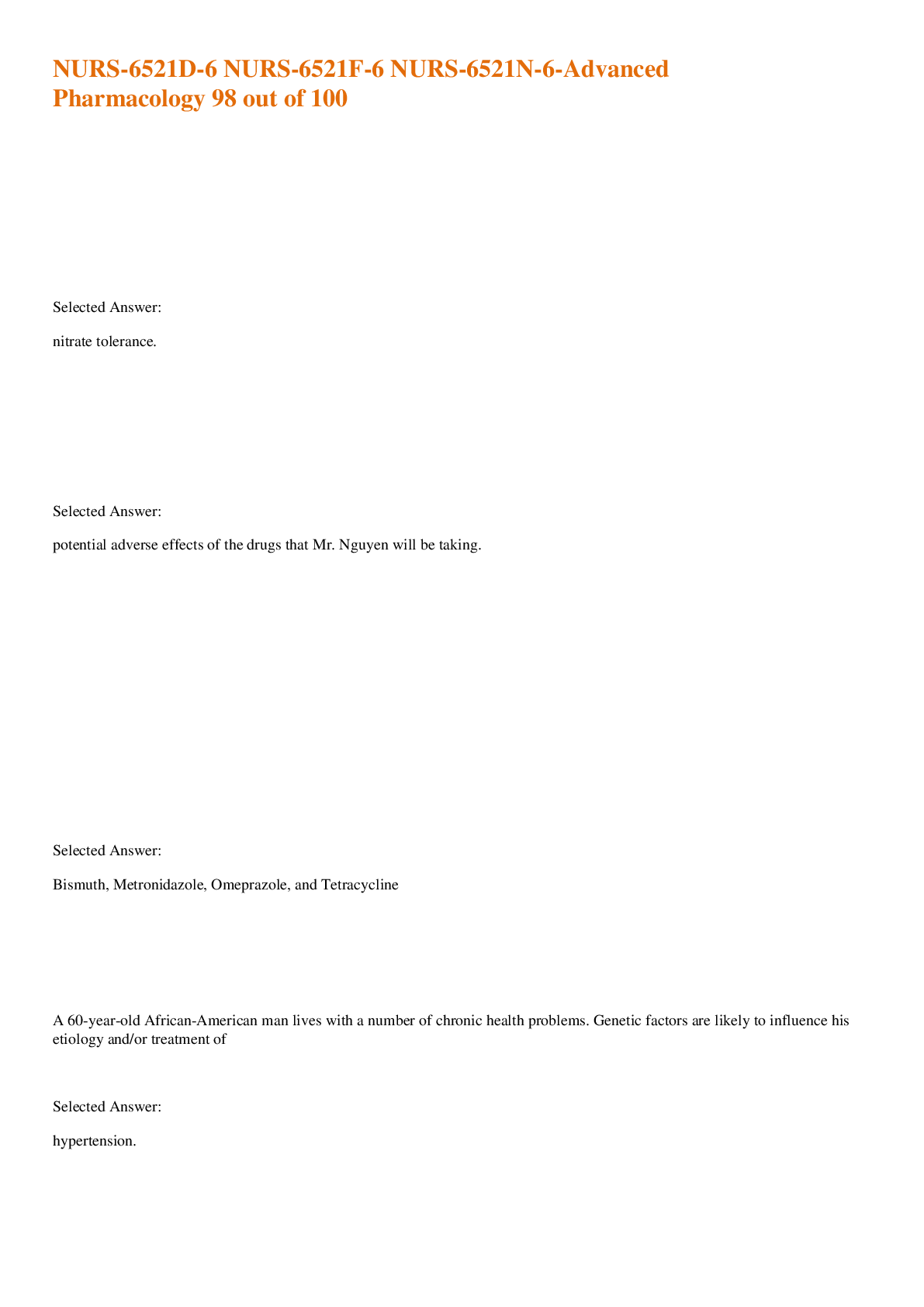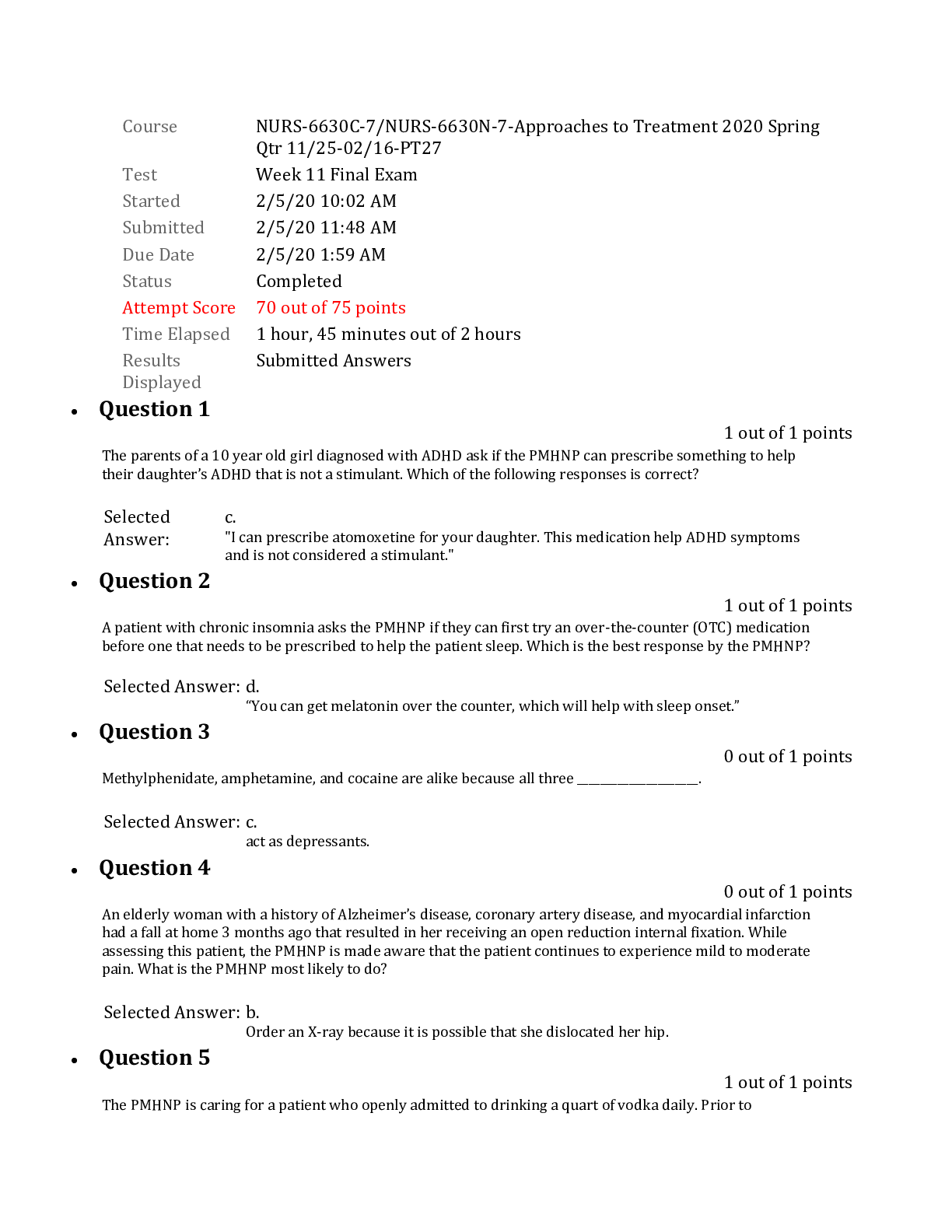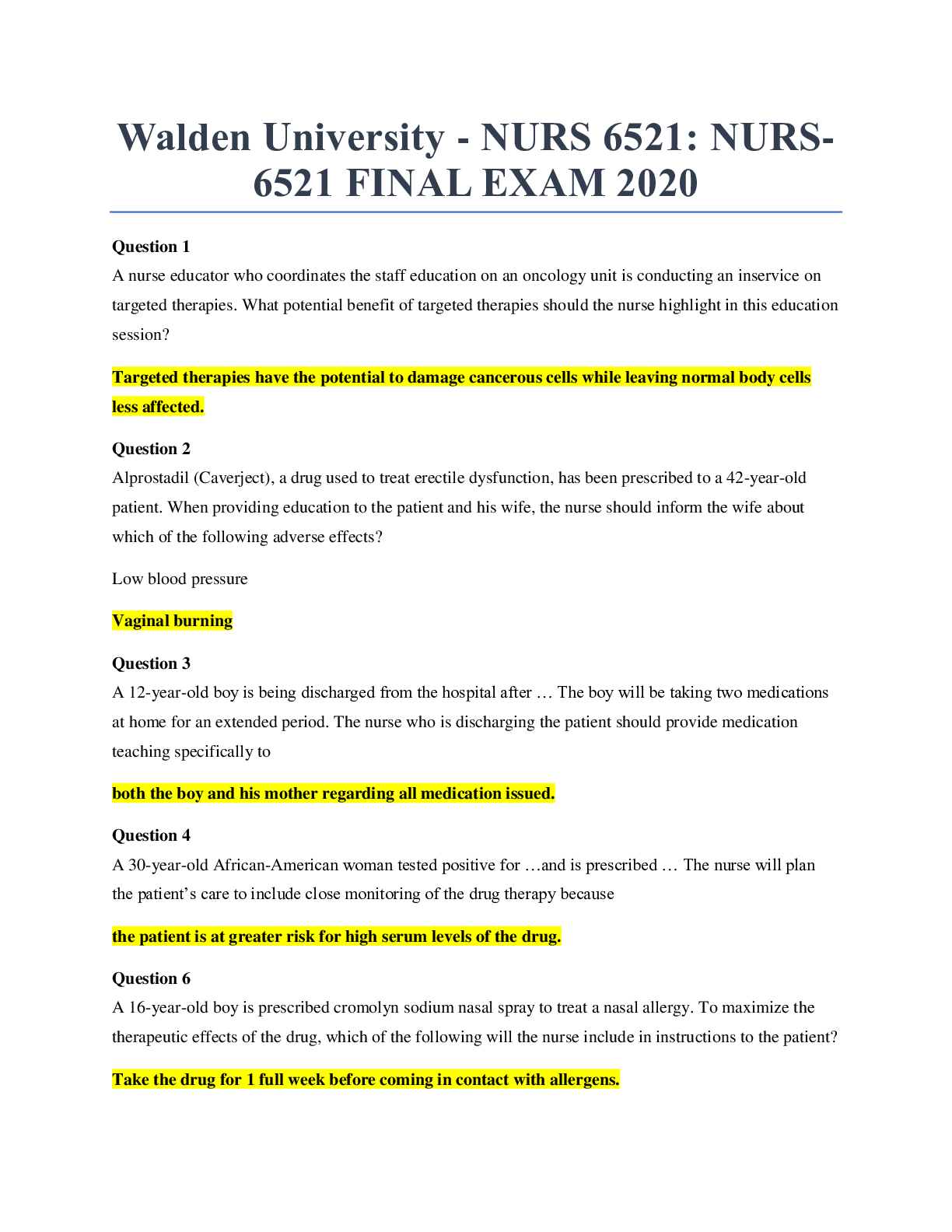Economics > EXAM > economics Exam: ECO 105 EXAM 1. 50 of the most frequently Occuring Test Questions and Answers. Quiz (All)
economics Exam: ECO 105 EXAM 1. 50 of the most frequently Occuring Test Questions and Answers. Quiz Score: 50 out of 50.
Document Content and Description Below
ECO 105 EXAM 1 The study of economics is primarily concerned with: keeping private businesses from losing money. demonstrating that capitalistic economies are superior to socialistic econo... mies. choices that are made in seeking to use scarce resources efficiently. determining the most equitable distribution of society's output. Question 2 1 / 1 pts Learning economics: Learning economics: is detrimental to good citizenship because economics emphasizes individualism. is helpful to employers, but not to workers and consumers. is important because economics is the "science of earning money." Correct! helps students improve analytical skills that are in great demand in the workplace. Question 3 1 / 1 pts The term "other things equal" means that: The term "other things equal" means that: the associated statement is normative. many variables affect the variable under consideration. Correct! a number of relevant variables are assumed to be constant. when variable X increases so does related variable Y. Question 4 1 / 1 pts Skip to question text. Joe sold gold coins for $1000 that he bought a year ago for $1000. He says, "At least I didn't lose any money on my financial investment." His economist friend points out that in effect he did lose money, because he could have received a 5 percent return on the $1000 if he had bought a bank certificate of deposit instead of the coins. The economist's analysis incorporates the idea of: Correct! opportunity costs marginal benefits that exceed marginal costs. imperfect information. normative economics. Question 5 1 / 1 pts Macroeconomics can best be described as the: Macroeconomics can best be described as the: analysis of how a consumer tries to spend income. study of the large aggregates of the economy or the economy as a whole. analysis of how firms attempt to maximize their profits. study of how supply and demand determine prices in individual markets. Question 6 1 / 1 pts If we say that two variables are inversely related, this means that: If we say that two variables are inversely related, this means that: the two graph as an upsloping line. Correct! an increase in one variable is associated with a decrease in the other. an increase in one variable is associated with an increase in the other. the resulting relationship can be portrayed by a straight line parallel to the horizontal axis. Question 7 1 / 1 pts <img src="http://www.mhhe.com/media_library/testbank/0072340363/CHAP01_files/c01-101r.jpg"><br><br>Answer on the basis of the relationships shown in the above four figures. The amount of <i>Y</i> is directly related to the amount of <i>X</i> in: Answer on the basis of the relationships shown in the above four figures. The amount of Y is directly related to the amount of X in: both 1 and 3. both 1 and 2. 2 only. Correct! l only. Question 8 1 / 1 pts <br><img src="http://www.mhhe.com/media_library/testbank/0072340363/CHAP01_files/c01-113r.jpg"><br><br><br>Refer to the above diagram. The slope of the line is: Refer to the above diagram. The slope of the line is: - 1/4 orrect! 1/4 1/2 3/5 Question 9 1 / 1 pts The money payments made to owners of land, labor, capital, and entrepreneurial ability are:<br> Hint: The answers have to be in the right order to match up with the above resources. The money payments made to owners of land, labor, capital, and entrepreneurial ability are: Hint: The answers have to be in the right order to match up with the above resources. interest, wages, rent, and profits respectively. rent, wages, dividends, and interest respectively. rent, profits, wages, and interest respectively. Correct! rent, wages, interest, and profits respectively. Question 10 1 / 1 pts Which of the following is real capital? Which of the following is real capital? a pair of stockings Correct! a construction crane a savings account a share of IBM stock Question 11 1 / 1 pts A production possibilities curve shows: A production possibilities curve shows: that resources are unlimited. that people prefer one of the goods more than the other. Correct! the maximum amounts of two goods that can be produced assuming the full and efficient use of available resources. combinations of capital and labor necessary to produce specific levels of output. Question 12 1 / 1 pts <br><img src="http://www.mhhe.com/media_library/testbank/0072340363/CHAP02_files/c02-041r.jpg"><br><br><br>Refer to the above diagram. Other things equal, this economy will achieve the slowest rate of growth if: Refer to the above diagram. Other things equal, this economy will achieve the slowest rate of growth if: it chooses point A. it chooses point B. Correct! it chooses point C. the ratio of capital to consumer goods is maximized. Question 13 1 / 1 pts <br><img src="http://www.mhhe.com/media_library/testbank/0072340363/CHAP02_files/c02-041r.jpg"><br><br><br>Refer to the above diagram. Society could achieve point "E" if: Refer to the above diagram. Society could achieve point "E" if: there is a greater availability of resources. technology improves. this society specializes and trades.t! All of the above. Question 14 1 / 1 pts Skip to question text. Refer to the above diagram. If society is currently producing 12 units of bicycles and 2 units of computers and it now decides to increase computer output to 4, the cost: will be 4 units of bicycles. Correct! will be 3 units of bicycles. will be 2 unites of bicycles. will be 1 unit of bicycles. Question 15 1 / 1 pts The law of increasing opportunity costs exists because: The law of increasing opportunity costs exists because: Correct! resources are not equally efficient in producing various goods. the value of the dollar has diminished historically because of persistent inflation. wage rates invariably rise as the economy approaches full employment. consumers tend to value any good more highly when they have little of it. Question 16 1 / 1 pts Opportunity cost is best defined as: Opportunity cost is best defined as: the monetary price of any productive resource. the amount of labor that must be used to produce one unit of any product. the ratio of the prices of imported goods to the prices of exported goods. Correct! the amount of one product that must be given up to produce one more unit of another product. Question 17 1 / 1 pts The capitalist belief that government should not interfere with the operation of the economy is know as: The capitalist belief that government should not interfere with the operation of the economy is know as: opportunity cost invisible hand. Correct! laissez-faire. ceteris paribus. Question 18 1 / 1 pts In terms of the circular flow diagram businesses obtain revenue through the _____ market and make expenditures in the _____ market. In terms of the circular flow diagram businesses obtain revenue through the _____ market and make expenditures in the _____ market. product; financial resource; product Correct! product; resource capital; product Question 19 1 / 1 pts The demand curve shows the relationship between: The demand curve shows the relationship between: money income and quantity demanded. price and production costs. Correct! price and quantity demanded. consumer tastes and the quantity demanded. Question 20 1 / 1 pts Other things equal, which of the following might shift the demand curve for gasoline to the left? Other things equal, which of the following might shift the demand curve for gasoline to the left? the discovery of vast new oil reserves in Montana Correct! the development of a low-cost electric automobile an increase in the price of train and air transportation a large decline in the price of automobiles Question 21 1 / 1 pts An increase in the price of peanut butter will: An increase in the price of peanut butter will: cause the demand curve for jelly to become vertical. shift the demand curve for jelly to the right. Correct! shift the demand curve for jelly to the left. not affect the demand for jelly. Question 22 1 / 1 pts A normal good is one: A normal good is one: whose amount demanded will increase as its price decreases. whose amount demanded will increase as its price increases. whose demand curve will shift leftward as incomes rise. the consumption of which varies directly with incomes. Question 23 1 / 1 pts By an "increase in demand" we mean that : By an "increase in demand" we mean that : product price has fallen so consumers move down to a new point on the demand curve. the quantity demanded at each price in a set of prices is greater. the quantity demanded at each price in a set of prices is smaller. a leftward shif of the demand curve has occurred. Question 24 1 / 1 pts Assume a drought in the Great Plains reduces the supply of wheat. Noting that wheat is a basic ingredient in the production of bread and that potatoes are a consumer substitute for bread, we would expect the price of wheat to: Assume a drought in the Great Plains reduces the supply of wheat. Noting that wheat is a basic ingredient in the production of bread and that potatoes are a consumer substitute for bread, we would expect the price of wheat to: rise, the supply of bread to increase, and the demand for potatoes to increase. rise, the supply of bread to decrease, and the demand for potatoes to increase. rise, the supply of bread to decrease, and the demand for potatoes to decrease. fall, the supply of bread to increase, and the demand for potatoes to increase. Question 25 1 / 1 pts At the equilibrium price: At the equilibrium price: quantity supplied may exceed quantity demanded or vice versa. Correct! there are no pressures on price to either rise or fall. there are forces that cause price to rise. there are forces that cause price to fall. Question 26 1 / 1 pts <img src="http://www.mhhe.com/media_library/testbank/0072340363/CHAP03_files/c03-104r.jpg"><br><br>Refer to the above diagram. The equilibrium price and quantity are: Refer to the above diagram. The equilibrium price and quantity are: $60 and 50 units. $60 and 200 units. Correct! $40 and 150 units. $20 and 100 units. Question 27 1 / 1 pts <img src="http://www.mhhe.com/media_library/testbank/0072340363/CHAP03_files/c03-104r.jpg"><br><br>Refer to the above diagram. A price of $20 in this market will result in: Refer to the above diagram. A price of $20 in this market will result in: a shortage of 50 units. a surplus of 50 units. a surplus of 100 units. ct! a shortage of 100 units. Question 28 1 / 1 pts The market system's answer to the fundamental question "Who will get the goods and services?" is essentially: The market system's answer to the fundamental question "Who will get the goods and services?" is essentially: Correct! "Those willing and able to pay for them." "Those who physically produced them." "Those who most need them." "Those who get utility from them." Question 29 1 / 1 pts The "invisible hand" concept suggests that: The "invisible hand" concept suggests that: changes in product demands are only randomly reflected in changes in the demands for resources. profit maximization is inconsistent with an efficient allocation of resources. government action is necessary to correct for market failures. Correct! when firms act in their own self-interest to maximize their profits, society will be better off because its output will also be maximized. Question 30 1 / 1 pts The balance of trade in the United states in recent years has: The balance of trade in the United states in recent years has: Correct! been a trade deficit. been a trade surplus. been an approximate balance in its imports and exports. been fluctuating between surplus and deficit on an annual basis. Question 31 1 / 1 pts The bulk of the U.S. international trade is with: The bulk of the U.S. international trade is with: the nations of Eastern Europe. the developing countries of Africa, Asia, and Latin America. Correct! other industrialized nations, for example, Canada, Japan, and the countries of Western Europe. China. Question 32 1 / 1 pts Which of the following <i>HAS</i> been a facilitating factor in world trade? Which of the following HAS been a facilitating factor in world trade? Correct! dramatic improvements in communications technology an increase in excise taxes import quotas export subsidies Question 33 1 / 1 pts "A good should be produced in that nation where the opportunity cost of producing it is lowest." This is the rule of specialization critical to the following economic concept: "A good should be produced in that nation where the opportunity cost of producing it is lowest." This is the rule of specialization critical to the following economic concept: law of increasing opportunity cost. scarcity Correct! comparative advantage absolute advantage Question 34 1 / 1 pts Depreciation of the dollar will: Depreciation of the dollar will: Correct! increase the prices of U.S. imports, but decrease the prices of U.S. exports. decrease the prices of U.S. imports, but increase the prices of U.S. exports. increase the prices of both U.S. imports and exports. decrease the prices of both U.S. imports and exports. Question 35 1 / 1 pts Appreciation of the Mexican peso will: Appreciation of the Mexican peso will: make Mexico's exports and imports both more expensive. Correct! make Mexico's exports more expensive and its imports less expensive. make Mexico's exports less expensive and its imports more expensive. increase Mexican exports. Question 36 1 / 1 pts If yesterday $1 would buy 800 South Korean won, but today $1 will only buy 790 won; the: If yesterday $1 would buy 800 South Korean won, but today $1 will only buy 790 won; the: dollar has appreciated in value. Correct! dollar has depreciated in value. demand for dollars in the foreign exchange market has increased relative to the supply of won. won price of dollars has gone up. Question 37 1 / 1 pts If 120 yen equals $1, a Japanese good priced at 600 yen would cost an American: If 120 yen equals $1, a Japanese good priced at 600 yen would cost an American: Correct! $5 $720 $7200 $500 Question 38 1 / 1 pts The World Trade Organiztion (WTO): The World Trade Organiztion (WTO): sets tariffs to balance international trade among nations. Correct! is the successor to GATT. is better known as the European Union. sets exchange rates to balance international trade among nations. Question 39 1 / 1 pts Critics of the WTO argue that free international trade and investment will: Critics of the WTO argue that free international trade and investment will: reduce U.S. imports. reduce employment in developing nations. Correct! undermine environmental and labor protections in the United States. increase immigration from low-income to high-income nations. Question 40 1 / 1 pts The North American Free Trade Agreement (NAFTA): The North American Free Trade Agreement (NAFTA): resulted from GATT negotiations at the Uruguay Round. established a free trade zone encompassing Canada, Mexico, and the United States. is also known as the Reciprocal Trade Act. permits the former republics of the Soviet Union to export goods duty free to North America. Question 41 1 / 1 pts The European Union (EU) comprises a group of European nations that have: The European Union (EU) comprises a group of European nations that have: Correct! abolished tariffs among one another and established a system of common tariffs with respect to nonmember nations. fully integrated their economies by abolishing individual governments and establishing one governing structure for all member countries. agreed to trade only among one another. eliminated all tariffs and trade barriers with nonmember nations. Question 42 1 / 1 pts A market: A market: reflects upsloping demand and downsloping supply curves. entails the exchange of goods, but not services. Correct! is an institution that brings together buyers and sellers. always entails face-to-face contact between buyer and seller. Question 43 1 / 1 pts Skip to question text. Refer to the above diagram, in which S1 and D1 represent the original supply and demand curves and S2 and D2 the new curves. In this market: supply has decreased and equilibrium price has increased. Correct! demand has increased and equilibrium price has decreased. demand has decreased and equilibrium price has decreased. demand has increased and equilibrium price has increased. Question 44 1 / 1 pts Skip to question text. Refer to the above diagram, in which S1 and D1 represent the original supply and demand curves and S2 and D2 the new curves. In this market the indicated shift in supply may have been caused by: an increase in the wages paid to workers producing this good. Correct! the development of more efficient machinery for producing this commodity. this product becoming less fashionable. an increase in consumer incomes. Question 45 1 / 1 pts Economic models: Economic models: are of limited use because they cannot be tested empirically. are limited to variables that are directly related to one another. Correct! emphasize basic economic relationships by abstracting from the complexities of the real world. are unrealistic and therefore of no practical consequence. Question 46 1 / 1 pts Which of the following is associated with macroeconomics? Which of the following is associated with macroeconomics? an examination of the incomes of Harvard Business School graduates Correct! an empirical investigation of the general price level and unemployment rates in the 1990s a study of the trend of pecan prices since World War II a case study of pricing and production in the textbook industry Question 47 1 / 1 pts Skip to question text. Refer to the above diagram. If a technology breakthrough occurred that improved our ability to produce computers, but had no effect on the production of bicycles, the production possibilities curve would: Correct! shift out on the computer side, but not on the bicycle side. shift in on the bicycle side, but remain at the same spot on the computer side. shift out on both sides. not shift. Question 48 1 / 1 pts When an economist says that the demand for a product has increased, this means that: When an economist says that the demand for a product has increased, this means that: Correct! consumers are now willing to purchase more of this product at each possible price. the product has become particularly scarce for some reason. product price has fallen and as a consequence consumers are buying a larger quantity of the product. the demand curve has shifted to the left. Question 49 1 / 1 pts The law of supply: The law of supply: Correct! reflects the amounts that producers will want to offer at each price in a series of prices. is reflected in a downsloping supply curve. shows that the relationship between producer revenue and quantity supplied is negative. reflects the income and substitution effects of a price change. Question 50 0 / 1 pts Which of these groups of nations are all members of the Euro zone? Which of these groups of nations are all members of the Euro zone? Great Britain, France, and Switzerland France, Germany, and Italy You Answered Denmark, Sweden, and Norway Russia, Poland, and Hungary [Show More]
Last updated: 1 year ago
Preview 1 out of 35 pages
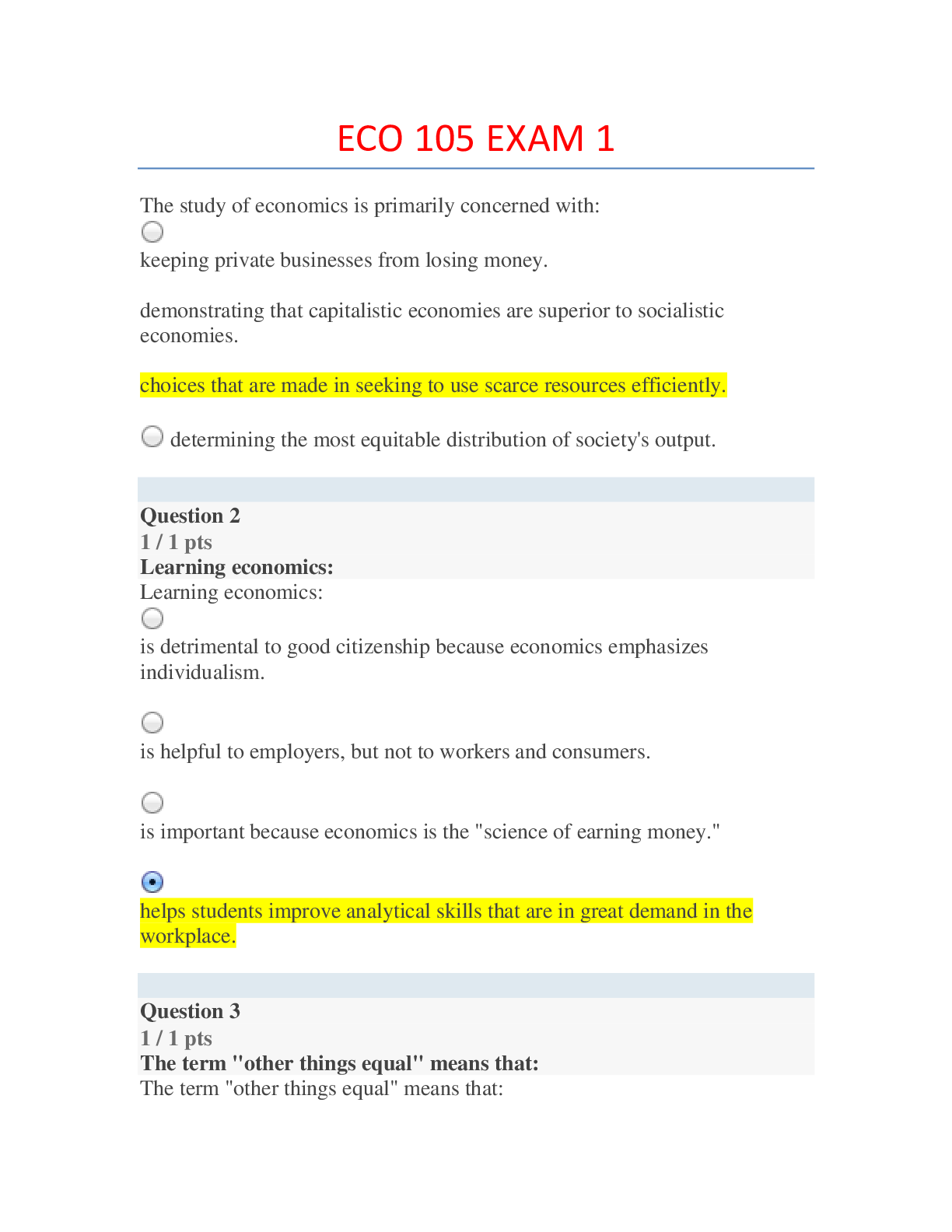
Reviews( 0 )
Document information
Connected school, study & course
About the document
Uploaded On
Aug 19, 2020
Number of pages
35
Written in
Additional information
This document has been written for:
Uploaded
Aug 19, 2020
Downloads
0
Views
76


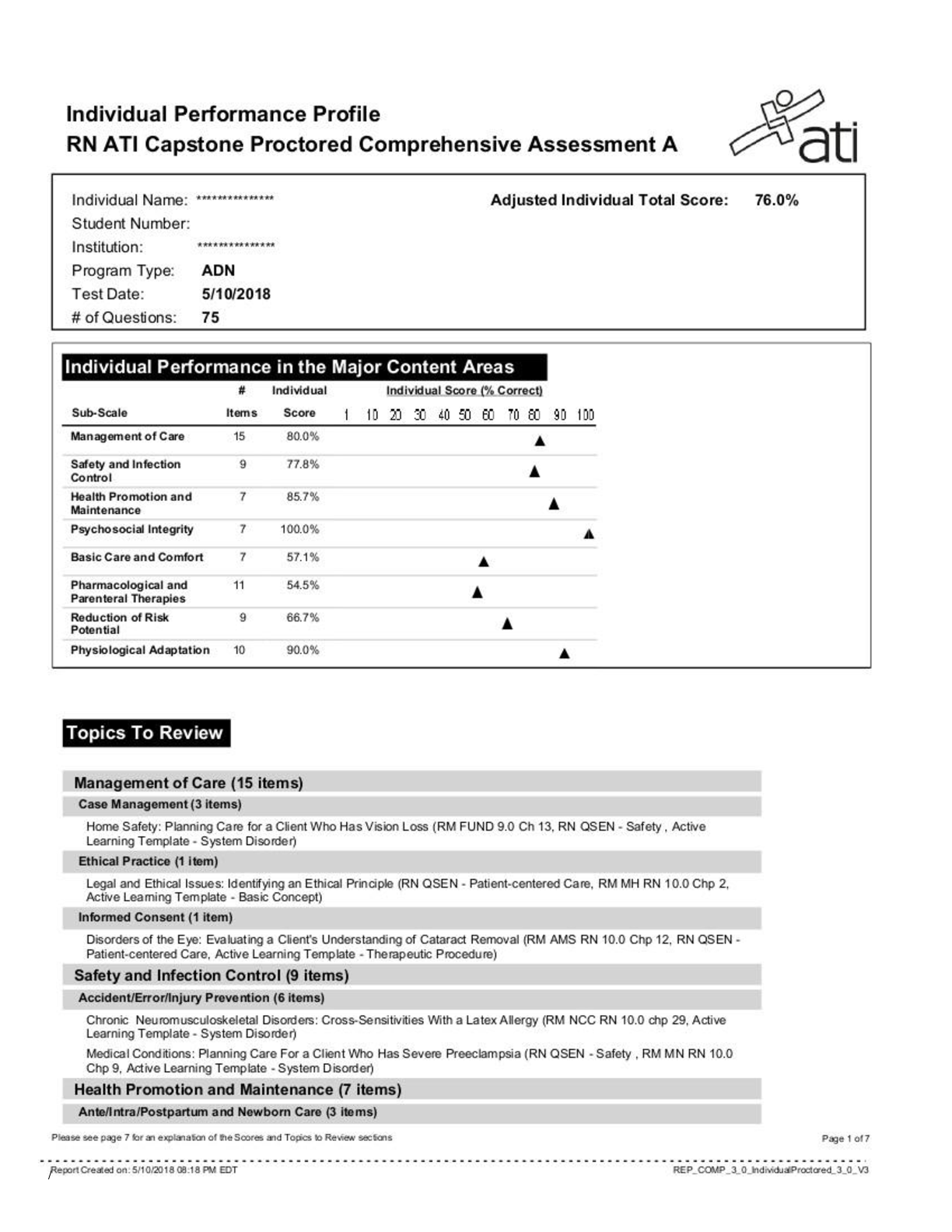
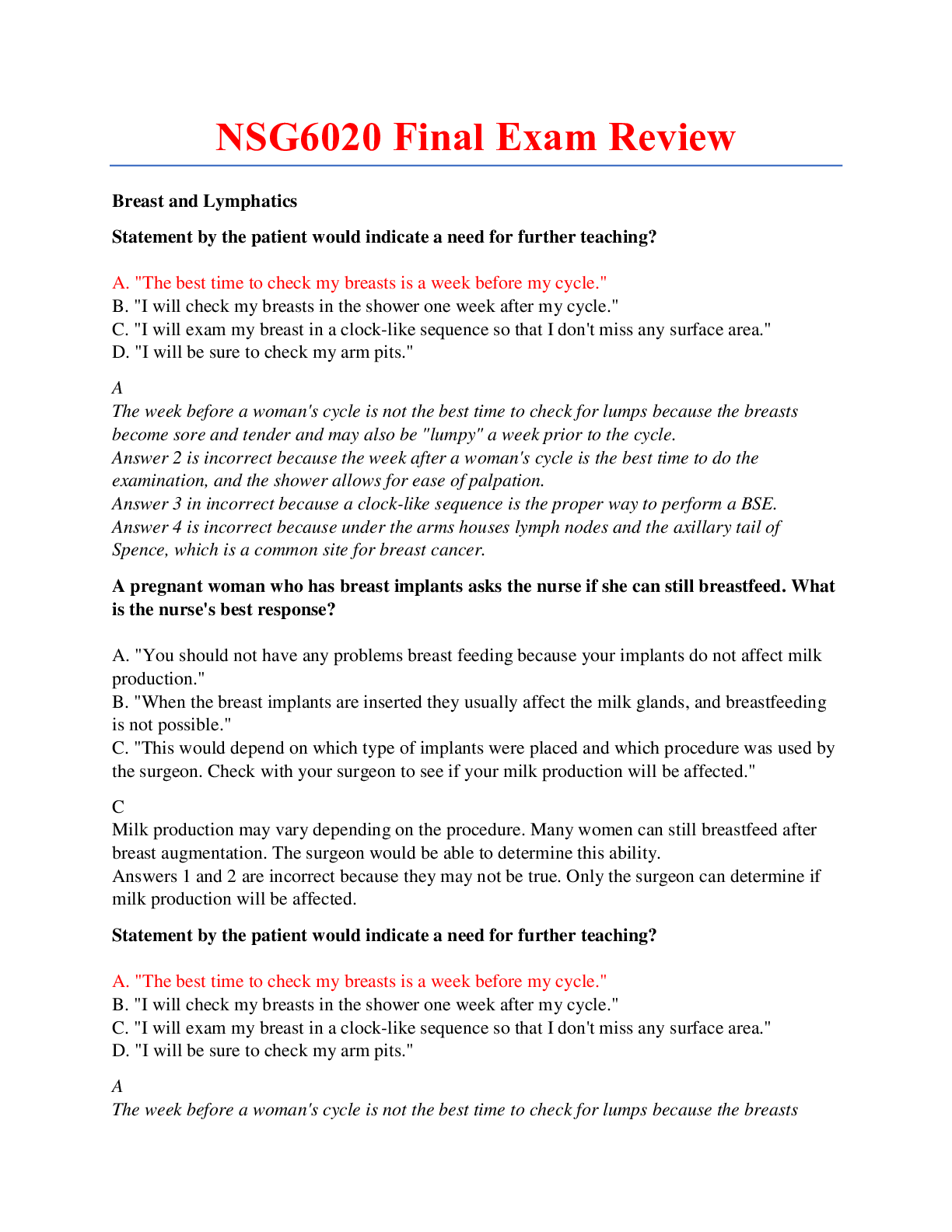

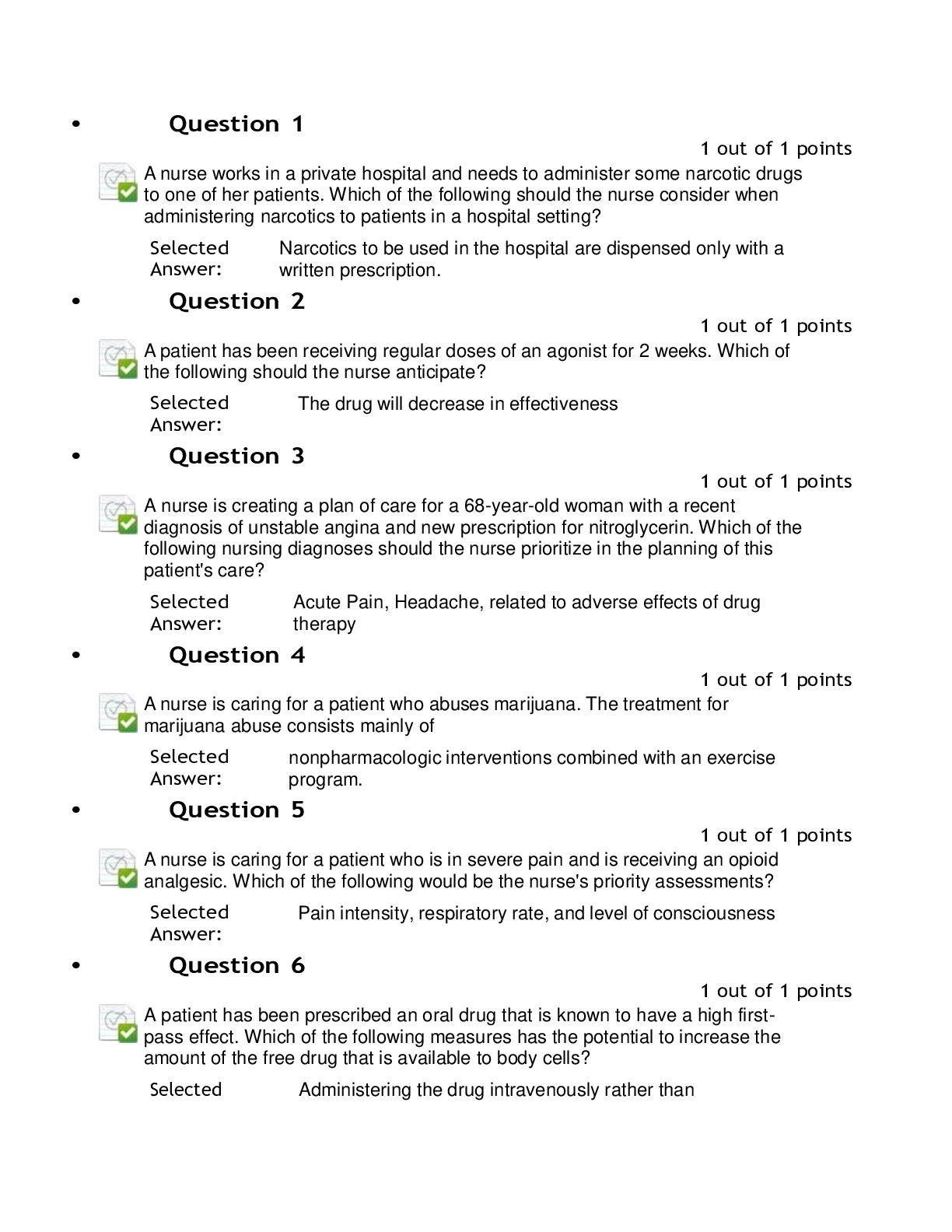

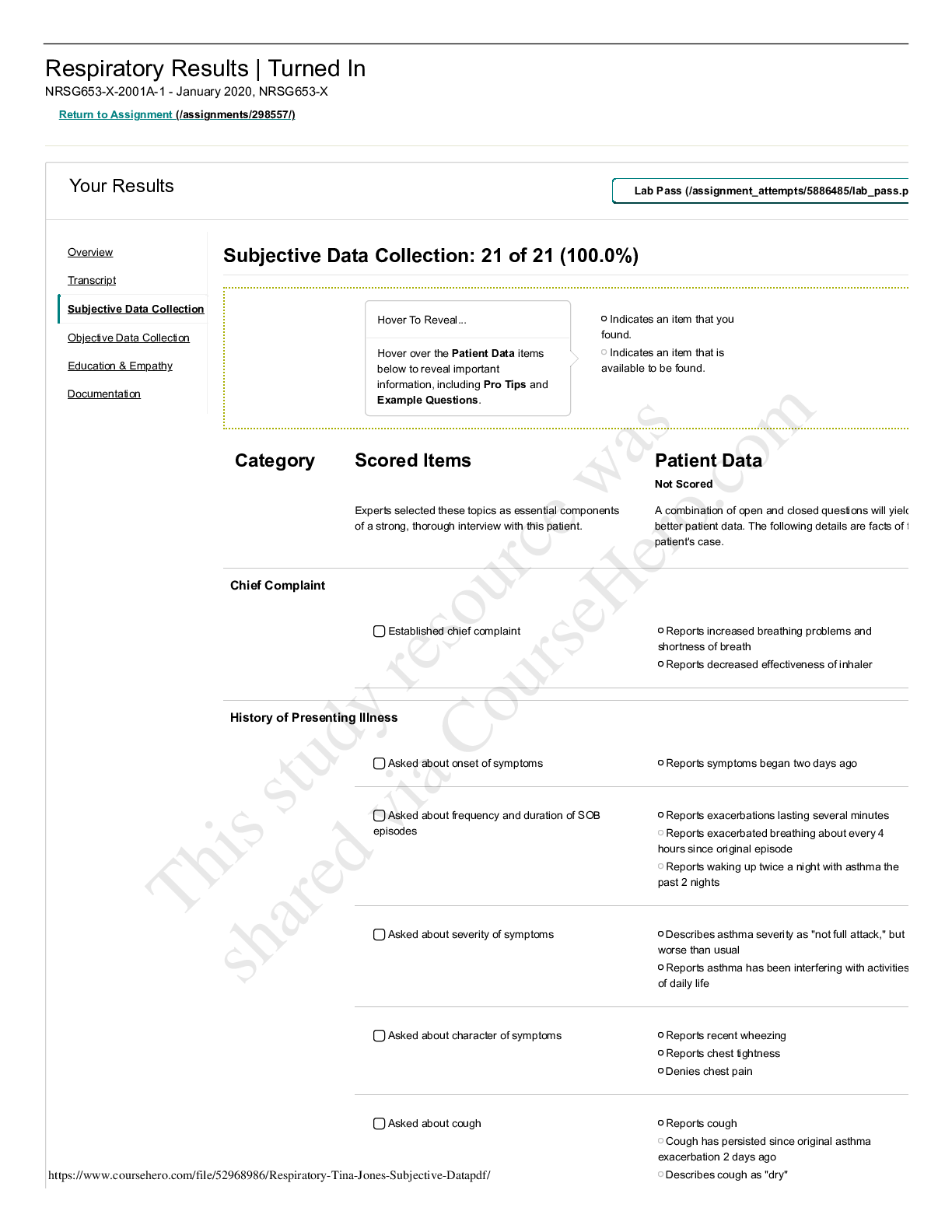





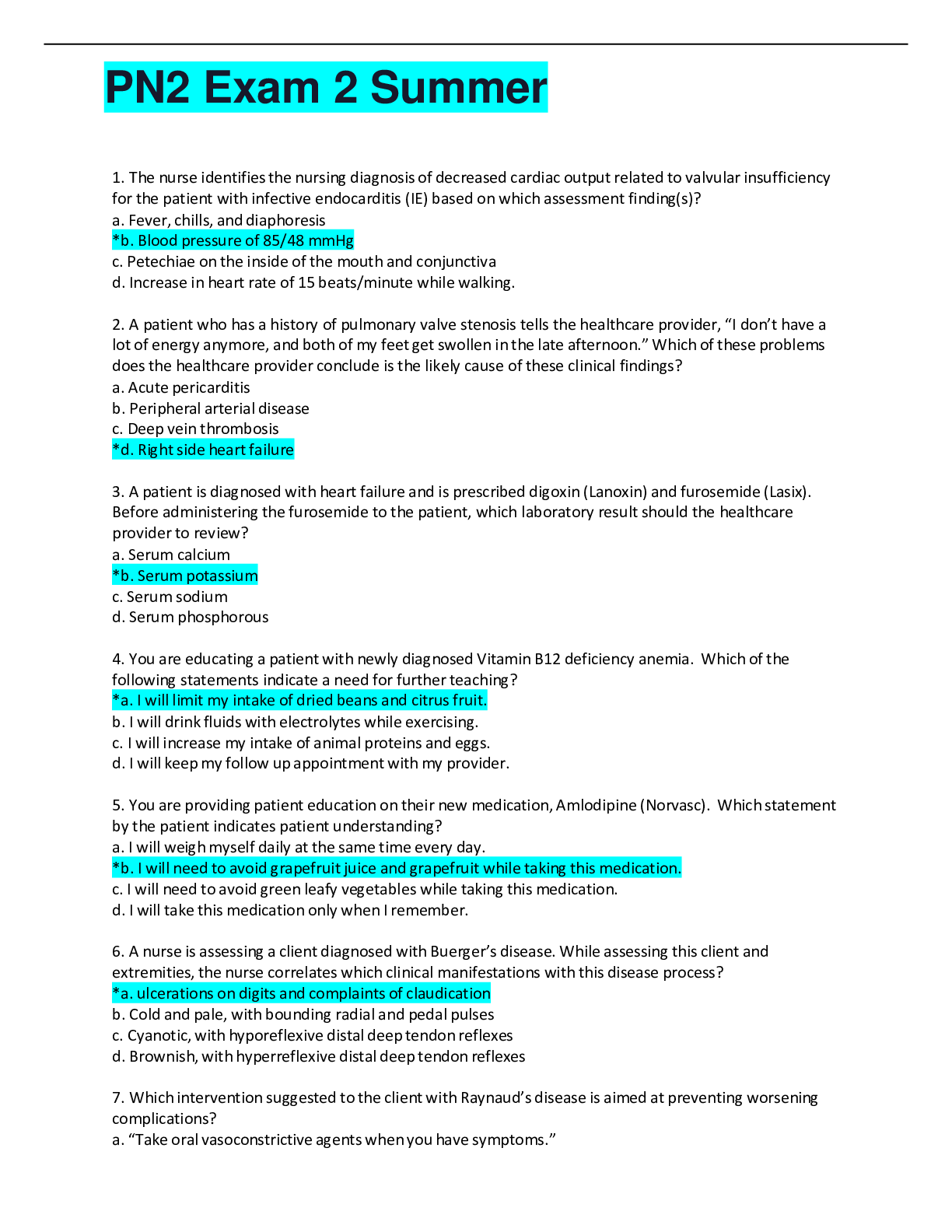





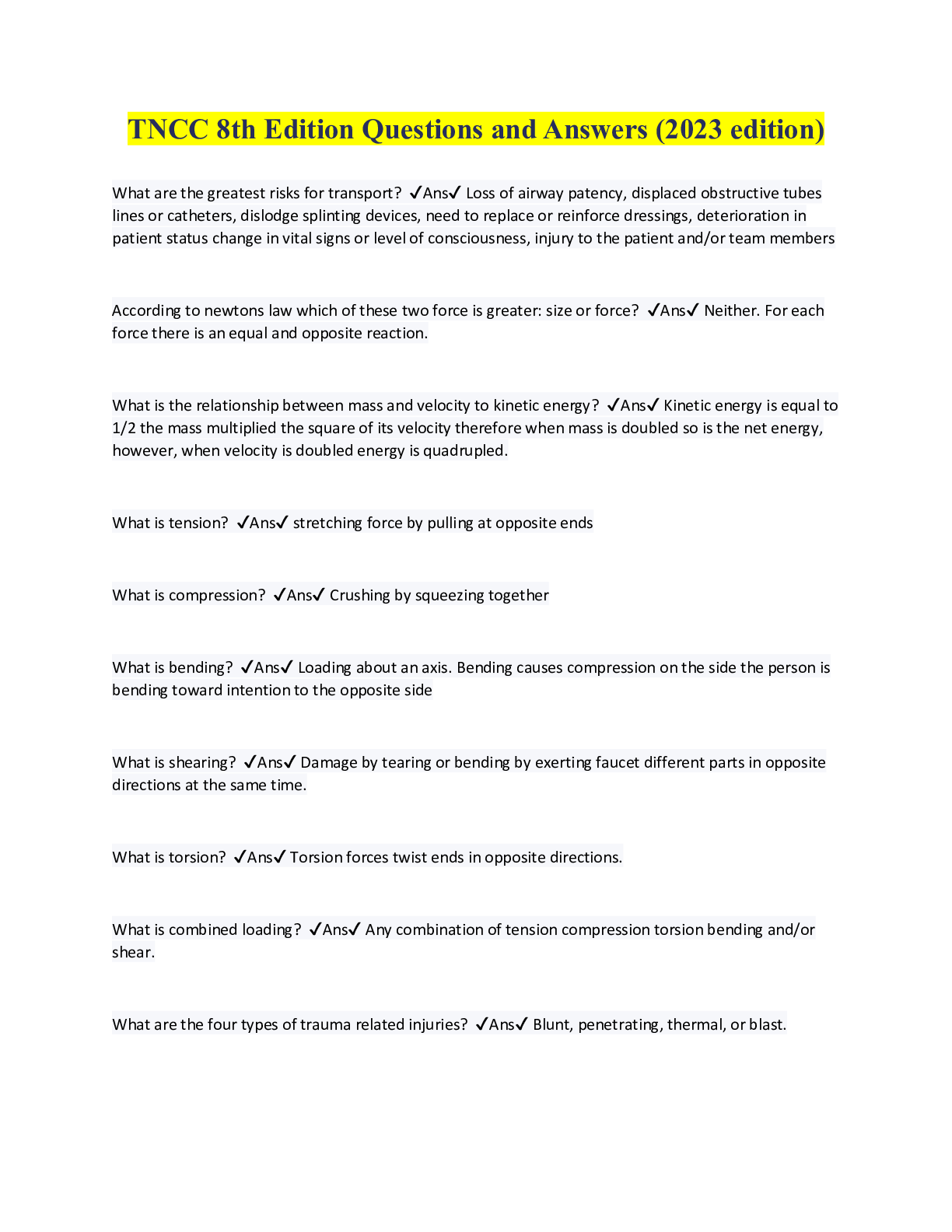
.png)

